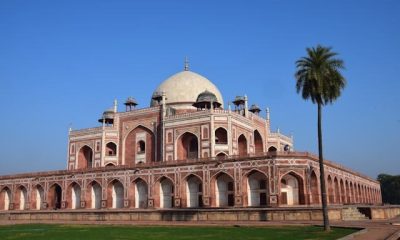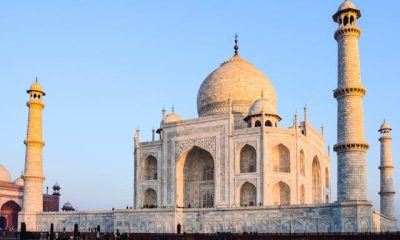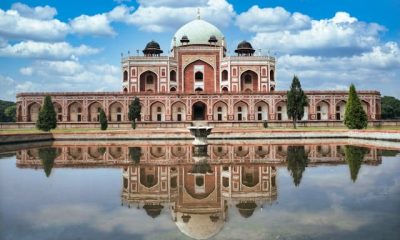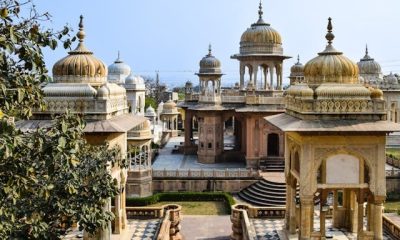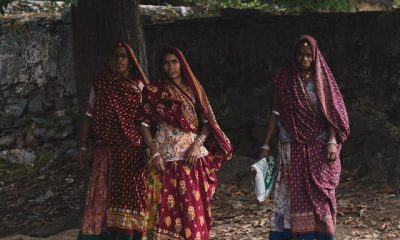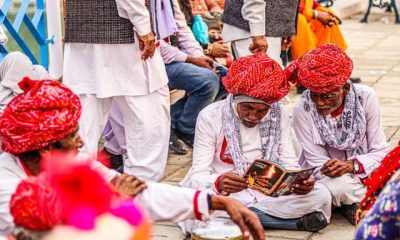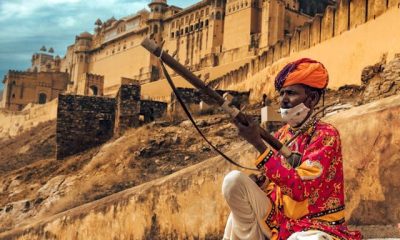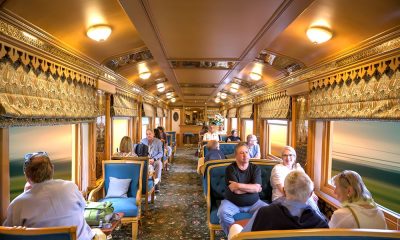Delhi with Taj Mahal, Amritsar and Tiger Safari
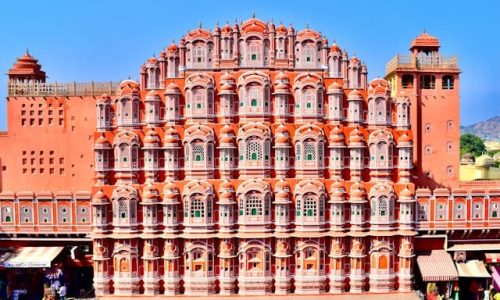

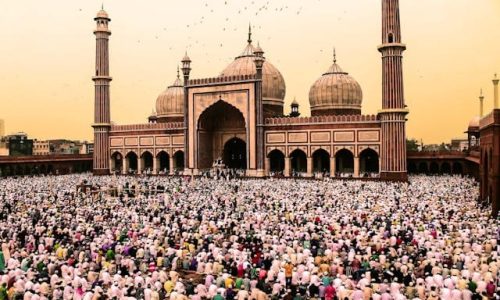
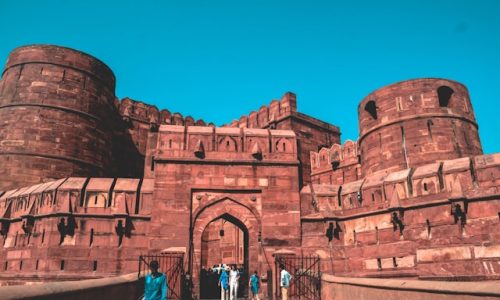
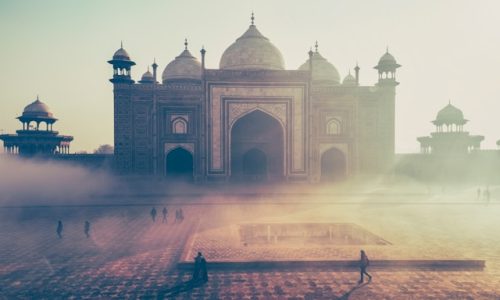
DELHI WITH TAJ MAHAL, AMRITSAR, AND TIGER SAFARI
- Duration: 15 Days, 14 Nights
- Itinerary: Delhi – Agra – Abhaneri – Jaipur – Deogarh – Udaipur – Ranakpur – Jodhpur – Bikaner – Mandawa – Delhi.
Travel Itinerary for A Private Tour
Pricing: (UNIT NETT PER PERSON RATES IN USD)
- Each of 04 paying pax double / twin sharing: 3345 USD
- Each of 06 paying pax double / twin sharing: 3035 USD
- Each of 08 paying pax double / twin sharing: 2775 USD
- Each of the 10 paying pax double / twin sharing: 2585 USD
- Single Room Supplement: 1500 USD
Services included:
- Services of accompanying Tour Guide from arrival till departure
- All ground transportation as detailed in the itinerary using air conditioned Vehicle
- Double / twin room with breakfast
- Farewell Dinner on the last evening in Delhi before departure
- Domestic Flight: Delhi – Udaipur
- Domestic Flight: Delhi – Amritsar
- Domestic Flight: Amritsar – Delhi
- 2 Jungle Safaris in Ranthambore National Park (Morning & Afternoon)
- Monument entrance fee mentioned in the Tour Itinerary
- Heritage Walk in Old Delhi
- Elephant / Jeep ride at Amber Fort in Jaipur
- Rickshaw ride in Jaipur
- Private Boat Tour in Udaipur
- Water Bottles during the Tour
- Currently applicable taxes
Not included services:
- Visa application process and fees
- International airfares & taxes
- Camera and Video charges at the monuments where applicable
- Any expenditure of personal nature such as drinks, tips, laundry, telephone charges etc
- Insurances (travel cancellation insurance, health insurance, etc)
- Any new tax imposed by the government
- Any chosen optional activity / Program
| CITY | HOTELS | NO. OF NIGHTS |
|---|---|---|
| Delhi | Vivanta by Taj | 2 |
| Udaipur | Rajdarshan | 2 |
| Deogarh | Deogarh Mahal | 1 |
| Jaipur | Fairfield by Marriott | 2 |
| Ranthambore | The Tigress | 2 |
| Agra | Grand Mercure | 2 |
| Amritsar | Holiday Inn | 2 |
| Delhi | Vivanta by Taj | 1 |
*or similar category Hotels. Check-in / out time is 12 noon at all the hotels, except Delhi (Check-in: 1400 hrs, Check-out: 12 noon) Total Number of Night/s: 14 Nights
ITINERARY
Arrive in Delhi. On arrival, you will be greeted and assisted by our representative and transferred to the hotel. (Check-in time 1400 hrs)
DELHI - It is a city that bridges two different worlds. Old Delhi, once the capital of Islamic India, is a labyrinth of narrow lanes lined with crumbling havelis and formidable mosques. In contrast, the imperial city of New Delhi, created by the British Raj, is composed of spacious, tree-lined avenues and imposing government buildings. Delhi has been the seat of power for several rulers and many empires for about a millennium. Many times, the city was built, destroyed, and then rebuilt here. Interestingly, a number of Delhi's rulers played a dual role, first as destroyers and then as creators.
Overnight rest at the hotel in Delhi.
After breakfast, proceed for a visit to Delhi, including the following:
**Heritage Walk in Old City**
Enjoy a walking tour of the backstreets of Old Delhi. Walk through the charming quarters of Old Delhi, where the bazaars are colorful and interesting, offering a variety of street food and home to some of the oldest shops with many delicacies. The area is also home to several small temples, shrines, old mosques, and protected monuments. Cows wander the streets, and small dharamshalas (rest-houses) and pyaus (water-stations) attest to the pious contributions of local merchants. The walk gives an opportunity to experience life in this narrow, crowded part of Old Delhi, where adjacent houses share common walls and everyone knows everyone else.
Raj Ghat
Raj Ghat is a memorial to Mahatma Gandhi. It is a black marble platform that marks the spot of Mahatma Gandhi's cremation on 31 January 1948, a day after his assassination. It is left open to the sky, with an eternal flame burning perpetually at one end. Located on the banks of the river Yamuna in Delhi, on Ring Road (officially known as Mahatma Gandhi Road), a stone footpath flanked by lawns leads to the walled enclosure that houses the memorial.
Drive Past the Government Buildings
New Delhi is home to several government buildings and official residences reminiscent of British colonial architecture. Today, we will drive past a few of them, including The Parliament House, designed by Baker and measuring 173m in diameter, and the Rashtrapati Bhawan, once the Viceroy’s residence and now the official residence of the President of India. Designed by Lutyens, it combines Western and Eastern styles.
Photo Stop at the India Gate
At the center of New Delhi stands the 42m high India Gate, an "Arc-de-Triomphe"-like archway in the middle of a crossroad. Similar to its French counterpart, it commemorates the 70,000 Indian soldiers who lost their lives fighting for the British Army during World War I. The memorial bears the names of more than 13,516 British and Indian soldiers killed on the Northwestern Frontier in the Afghan War of 1919. Under the arch, the Amar Jawan Jyoti commemorates the Indian armed forces’ losses in the Indo-Pakistan War of 1971.
Qutub Minar
Qutub Minar is a soaring, 73m high tower of victory, built in 1193 by Qutab-ud-din Aibak. The tower has five distinct stories, each marked by a projecting balcony, tapering from a 15m diameter at the base to just 2.5m at the top. The first three stories are made of red sandstone; the fourth and fifth stories are made of marble and sandstone. At the foot of the tower is the Quwwat-ul-Islam Mosque, the first mosque built in India. A 7m high iron pillar stands in the courtyard of the mosque. It is said that if you can encircle it with your hands while standing with your back to it, your wish will be fulfilled.
Overnight at the hotel in Delhi.
This morning, take a flight to Udaipur. Upon arrival in Udaipur, transfer to the hotel.
UDAIPUR - The "City of Lakes" was founded in 1559 AD as the capital of the former Mewar state by Maharana Udai Singh on the eastern banks of Lake Pichola. Udaipur is known for its rich cultural, social, and natural heritage, aesthetic beauty, and ecological richness, which have been preserved through its surrounding lakes, the serene and opulent hilly range of the Aravallis, lush green vegetation, pleasant gardens, and harmonious built forms. The magical beauty of Lake Pichola allures visitors again and again.
Later in the evening, enjoy the the sunset from Karni Mata Temple in Udaipur.
The Karni Mata Temple offers a mesmerizing view of the city and its surroundings. As the sun begins its descent toward the horizon, visitors to the temple are treated to a breathtaking panorama of Udaipur's picturesque landscape. As the golden hues of the setting sun cast their warm glow over the city, the shimmering waters of Lake Pichola and Fateh Sagar Lake come alive, reflecting the changing colors of the sky. The Aravalli Hills, stretching majestically in the distance, provide a dramatic backdrop to the scene.
Overnight at the hotel in Udaipur.
Optional: Cycling Tour at Sunrise
Highlights:
- Cycle through city streets to absorb the local atmosphere.
- All necessary equipment included.
- Breakfast included.
- Free hotel pickup and drop-off.
- Private guide for a more personalized experience.
What to Expect:
The tour begins with pickup from the hotel at 6:30 am. The day starts early to avoid traffic and catch a glimpse of the beautiful sunrise. Cycling starts at 7:30 am after a briefing on precautions and other instructions. Cycle through the historic old city of Udaipur. Pedal through small villages and picturesque countryside at dawn to watch the serene surroundings. Most of the ride is on fairly level and easy terrain, with a few small challenging hills. You will pedal along the banks of shimmering lakes, stopping to enjoy the views and have your packed breakfast. The trail ends at 9:30 am. This is a 20 km ride of moderate difficulty on a mountain gear bicycle, accompanied by a cyclist and a safety vehicle for the entire track.
Inclusions:
- Hotel pickup and drop-off.
- Use of bicycle.
- Use of helmet.
- Local guide.
- Packed breakfast.
Additional Info:
- Not recommended for participants with back problems.
- Not recommended for participants with heart conditions or other serious medical issues.
---
After breakfast, proceed to visit Udaipur, including the following:
City Palace
City Palace towers over Pichola Lake. Maharana Udai Singh initiated the construction of the palace, but successive Maharanas added several palaces and structures to the complex while retaining remarkable uniformity in design. The entry to the Palace is through the Hathi Pol, the Elephant Gate. The Bari Pol, or Big Gate, brings you to the Tripolia, the Triple Gate. It was customary to weigh the Maharaja under this gate in gold and silver, which was then distributed to the populace. Balconies, cupolas, and towers of the palace offer a wonderful view of the lake.
Jagdish Temple
Jagdish Temple is one of the most famous temples in Udaipur. Located in the Old City, this temple is built in the Indo-Aryan style of architecture. In 1651, Maharana Jagat Singh, who ruled Udaipur from 1628-53, constructed the temple dedicated to Lord Vishnu (Laxmi Narayan), the preserver of the universe. It is celebrated as the largest temple in Udaipur, with its gateway located 150 meters from the Bara Pol of the City Palace.
Sahelion ki Bari
Maharana Sangram Singh built this garden in the mid-18th century. The "Garden of the Maidens" reflects the lifestyle of the ladies of the court. The delightful gardens showcase their discreet and impeccable taste, featuring four pools with dainty kiosks. The area is adorned with flowerbeds, lawns, pools, and fountains, all protected by a series of walls and shady trees. The fountains of Sahelion ki Bari function solely by water pressure, with no pumps used. The garden includes a lotus pool and a sitting room decorated with paintings and glass mosaics.
Boat Ride on Lake Pichola
In the evening, enjoy a boat ride on Lake Pichola. Fringed with hills, gardens, havelis, ghats, and temples, Lake Pichola is the scenic focus of Udaipur. The picturesque boat ride on Lake Pichola offers the best scenic views of the lake and the surrounding mountains, as well as some of the most important historical monuments along the lakeside or within the lake.
Overnight at the hotel in Udaipur.
After breakfast, drive to Deogarh.
Deogarh, located at an altitude of about 2100 feet above sea level, offers a cooler climate compared to other parts of Rajasthan. The main attraction in Deogarh is Deogarh Mahal, which was founded in 1670 AD by Rawal Dwarka Das Ji as a family residence. From its inception, Deogarh Mahal has served as a cultural hub for village activities and has played a significant role in the economy and heritage of the Mewar region. The Mahal is a vivid showcase of India's rich history, art, and traditions, featuring expressive colors and intricately detailed furnishings that highlight its grandeur.
Later in the evening, enjoy a leisurely stroll through the local bazaar in the town.
Explore the vibrant market, where you can experience the local culture, shop for traditional crafts, and immerse yourself in the daily life of Deogarh's residents.
Dinner and overnight stay at Deogarh Mahal in Deogarh.
After breakfast at the hotel, drive to Jaipur.
Jaipur, the fascinating capital of Rajasthan, is popularly known as the Pink City due to the distinctive color of its buildings. Founded in 1727 AD by Maharaja Sawai Jai Singh II, Jaipur was designed following a grid system, making it the only planned city of its time. The city was designed by a young Bengali architect, Vidhyadhar Bhattacharya, in accordance with Shilpa Shastra, an ancient Hindu treatise on architecture. Jaipur is rich in culture, traditions, and history, offering a royal treat for tourists from around the world.
On arrival, check in and rest at the hotel.
Later in the evening, explore the old city of Jaipur, where you can experience the vibrant atmosphere, historic architecture, and unique charm of this iconic city.
Overnight at the hotel in Jaipur.
After breakfast, embark on a city tour of Jaipur, including the following highlights:
Elephant/Jeep Ride at Amber Fort: Experience the royal treatment with an Elephant ride up to Amber Fort, just as the royalty of Rajasthan once did. You'll mount the elephant from a raised platform and sit comfortably in a specially designed, secure seat as the majestic animal winds its way up the fort's ramparts. The elephants are adorned with colorful floral and geometric patterns, especially on their trunks, creating a vibrant and traditional atmosphere. Alternatively, you can opt for a Jeep ride if you prefer a different experience.
Amber Fort: Amber Fort, set against the picturesque and rugged hills, is a stunning blend of Hindu and Mughal architecture. Constructed by Raja Man Singh I in 1592 and completed by Mirja Raja Jai Singh, the fort is built from red sandstone and white marble. The fort's interior walls are adorned with expressive paintings, intricate carvings, precious stones, and mirror settings. Originally built as a stronghold against warring enemies, the fort's heavily structured walls provided safety for its residents.
Photo Stop at Hawa Mahal (Palace of Winds): One of Jaipur's most iconic landmarks, the Hawa Mahal was built by the poet king Sawai Pratap Singh. This five-story building, overlooking the bustling bazaar street, showcases Rajput architecture with its 953 delicately honeycombed pink sandstone windows, known as 'jharokhas.' The palace was originally designed for the royal ladies to observe everyday life and city processions from behind their veiled comfort.
City Palace: Located in the heart of the walled city, the City Palace Complex is a testament to the vision of Jaipur's founder, Maharaja Sawai Jai Singh II. The palace is a blend of Mughal and Rajput architecture, with structures built by various rulers over time. The ex-royal family still resides in part of the palace, which continues to impress visitors with its imposing and magnificent architecture.
Jantar Mantar: Jantar Mantar is a collection of architectural astronomical instruments, built by Maharaja Jai Singh II between 1727 and 1734. Modeled after an earlier observatory in Delhi, this site is the largest and best-preserved of the five observatories Jai Singh II constructed. It is recognized as a UNESCO World Heritage site, reflecting the astronomical skills and cosmological concepts of the scholarly prince during the late Mughal period.
Overnight at the hotel in Jaipur.
After breakfast at the hotel, drive to Ranthambore National Park.
Ranthambore National Park is one of India's most famous and expansive wildlife reserves, known for its stunning and diverse landscapes. The park's varied terrain, which includes dry deciduous forests, rugged hills, serene lakes, and open grasslands, creates the perfect habitat for an incredible array of wildlife, making it a true haven for nature enthusiasts.
The main attraction of Ranthambore is its population of tigers. These majestic big cats are the park's highlight, and visitors flock here for the chance to see them in their natural environment. While spotting a tiger during a safari is a thrilling possibility, it's never guaranteed, as these elusive creatures roam freely in the vast expanse of the park. Ranthambore is divided into several zones, each with its own network of roads and trails, providing ample opportunities for wildlife sightings during safari drives.
Beyond tigers, Ranthambore is home to a diverse range of flora and fauna. The park shelters animals such as leopards, sloth bears, wild boars, sambar deer, spotted deer, Indian gazelles, and langur monkeys. Birdwatchers will also find Ranthambore a paradise, with over 300 bird species recorded in the park, including numerous migratory birds that visit during the winter.
Upon arrival in Ranthambore, check into your hotel and unwind as you prepare for an exciting wildlife experience.
Overnight at the hotel in Ranthambore National Park.
Today is the day of Jungle Safari in Ranthambore. One early morning safari and an afternoon safari will be organized during the day. Overnight at the hotel in Ranthambore National Park.
After breakfast at the hotel, check out and drive further to Agra.
AGRA – The city of the inimitable TAJ MAHAL.
The architectural splendor of the mausoleums, the fort, and the palaces is a vivid reminder of the opulence of the legendary Mughal Empire. While its significance as a political center ended with the transfer of the capital to Delhi in 1634 by Shah Jahan, its architectural wealth has secured its place on the international map. A pleasant town with a comparatively slow pace, Agra is known for its superb inlay work on marble and soapstone by craftsmen who are descendants of those who worked under the Mughals.
On arrival in Agra, check in and relax. The rest of the day is at leisure.
Overnight at the hotel in Agra.
Visit the following in Agra:
Taj Mahal
Taj Mahal, or Crown of Palaces, is a white marble mausoleum built by Mughal Emperor Shah Jahan as a memorial to his beloved wife Mumtaz Mahal. A world-renowned wonder, Taj Mahal looks the same from all four sides and is widely recognized as "the jewel of Muslim art in India and one of the universally admired masterpieces of the world's heritage." The Taj Mahal is phenomenal not only in beauty but in the deep planning and design that went into its making. This enchanting mausoleum began in 1631 and took 22 years to complete with the help of an estimated 20,000 workers. (It remains closed on Fridays).
Agra Fort
The great Mughal Emperor Akbar commissioned the construction of the Agra Fort, although additions were made until the time of his grandson Shah Jahan. The forbidding exteriors of this fort hide an inner paradise. There are a number of exquisite buildings, such as Moti Masjid - a white marble mosque akin to a perfect pearl; Diwan-I-Am, Diwan-I-Khaas, Musamman Burj - where Shah Jahan died in 1666 A.D., Jahangir's Palace, Khaas Mahal, and Shish Mahal. The massive Agra Fort is 2.5 km long and is considered the predecessor of the Delhi Red Fort.
Itimad-Ud-Daulah
Sometimes called the ‘Baby Taj’ because of its resemblance to Agra’s most famous monument. However, Itimad-Ud-Daulah’s Tomb was built before the Taj Mahal. Several of its stylistic features, such as a tomb in white marble surrounded by a formal garden and the use of inlay work in the marble to create floral or geometric designs, inspired similar features of the Taj Mahal.
Mehtab Bagh
Mehtab Bagh is a garden complex located on the opposite side of the Yamuna River. It is one of the best places in Agra to enjoy the sunset with a rear view of the Taj Mahal.
Overnight at the hotel in Agra.
This morning drive from Agra to Delhi to board the flight to Amritsar.
On arrival in Amritsar, transfer to the hotel and rest.
Amritsar holds immense historical, cultural, and religious significance, making it one of the most visited destinations in India. The city boasts a rich cultural heritage, reflected in its traditional music, dance, and festivals. Bhangra, a lively and energetic Punjabi dance form, originated in this region and is celebrated with gusto during festivals and weddings. Known for its warm hospitality and welcoming spirit, Amritsar offers visitors a memorable and enriching experience.
The rest of the day is at leisure in Amritsar.
Overnight at the hotel in Amritsar.
After breakfast, have a city tour in Amritsar including the following:
The Golden Temple
Also known as Harmandir Sahib, is the holiest Gurdwara (place of worship) of Sikhism and one of the most revered spiritual sites in India. The Golden Temple is renowned for its stunning architecture, characterized by its golden dome (from which it derives its name) that glitters in the sunlight. The dome is covered with approximately 750 kilograms of pure gold, symbolizing the spiritual and material wealth of Sikhism. The temple complex exemplifies the Sikh principles of seva (selfless service) and langar (community kitchen). The langar hall, located within the complex, serves free meals to all visitors regardless of caste, creed, or religion. This tradition of communal dining promotes equality, humility, and compassion.
Jallianwala Bagh
A historic public garden infamous for being the site of the Jallianwala Bagh massacre, a tragic event in Indian history that occurred on April 13, 1919, during the British colonial rule. Jallianwala Bagh serves as a memorial to the victims of the massacre and a reminder of the sacrifices made during India's struggle for independence. The garden has been preserved as a monument to commemorate the lives lost.
Wagah Border Ceremony
It is a daily military ceremony that takes place at the Wagah Border between India and Pakistan, near the cities of Amritsar (India) and Lahore (Pakistan). This elaborate and highly choreographed ceremony is a symbol of the rivalry and camaraderie between the two nations and attracts spectators from both sides of the border. The ceremony begins with a parade conducted by the Border Security Force (BSF) of India and the Pakistan Rangers. Soldiers from both sides engage in synchronized drills, showcasing their martial skills and discipline. The drills include high-stepping marches, aggressive gestures, and precise footwork. The highlight of the ceremony is the lowering of the national flags of India and Pakistan. As the sun sets, both flags are simultaneously lowered amidst a backdrop of patriotic songs, cheering crowds, and waving flags. The lowering of the flags symbolizes the end of the day and the closing of the border.
Overnight at the hotel in Amritsar.
On-time transfer to Amritsar Airport for your flight to Delhi. On arrival in Delhi, transfer to your hotel for some rest before your departure flight back home.
Later, on-time transfer to the airport to board your flight back home.
GALLERY / PHOTOS
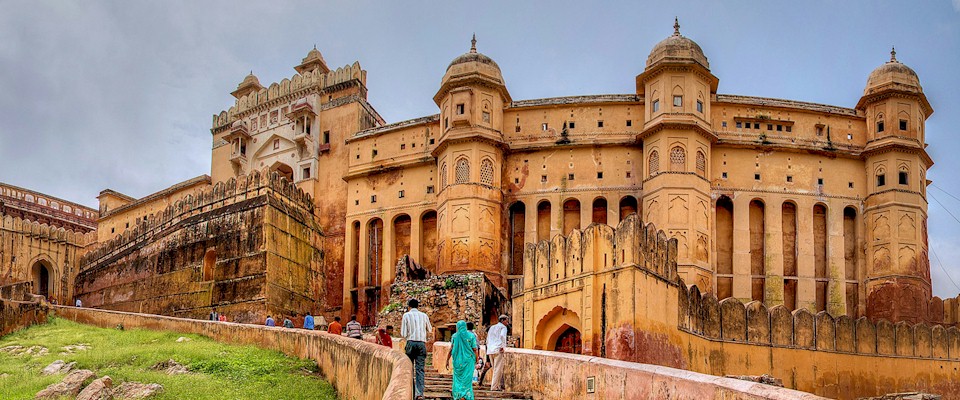
BOOK A CALL BACK WITH AGENT TODAY
MORE PACKAGES
OTHER TRAVEL PACKAGES


